 |
|
| Issue #122 • March/April, 2010 |
Congratulations. You’ve escaped the city life and are now the proud owners of your little plot of rural paradise. It’s natural to start thinking about all the possibilities for your acreage: chickens, a garden, maybe an orchard or berry patch.
And a cow. Yeah, a cow. Fresh milk, cheese, and butterwhat could be better? Owning your own cow can be one of the most satisfying of rural experiences…if you’re prepared.
As Roger Staubach observed, “Spectacular achievements are always preceded by unspectacular preparation.” Like raising children, getting a cow takes forethought and adequate homework.
|
Land
I am assuming you would not be interested in obtaining a cow if you were living in a tightly-packed suburb. So how much land do you need?
There’s no cut-and-dried one-size-fits-all requirement for how much land a cow needs because it depends on whether you’re planning on grazing your animals year-round, confining your animals to a paddock, or something in-between. It also depends on whether you live in the lush croplands of Virginia or the dry Mohave Desert.
Yet another variable is whether you must feed hay during the winter, or if your winters are mild enough that the animals can graze year-round. If you live in Tennessee, your pasture and available forage will be far different than if you live in North Dakota.
Obviously there’s no easy answer to how much land a cow requires. The important thing is not to obtain more animals than your land can comfortably support. Work with what you have, and be prepared to supplement with purchased hay as needed.
Remember, a cow’s “job”what she does for twelve hours a dayis to eat. It is surprising how quickly a cow or two can eat down a small pasture. But just because you only have a one-acre field shouldn’t preclude you from getting cows. However, you will need to purchase hay to feed them because one acre is not enough land to support anything bovine.
Cows can indeed be kept on small plotsan acre or twobut they must be fed. We used to own a home with a two-acre pasture on which we kept three bovines (cow/calf and yearling steer). We needed to supplement their feed about nine months out of the year.
Grass or grain?
In my experienceand I’m talking about a family milk cow, not a high-producing animal in a commercial dairya cow does fine raised almost exclusively on grass or field hay. This is a shocking statement to a lot of dairymen, so let me qualify it.
|
A family cow does not need to produce to the absolute maximum of her potential. Indeed, doing so will probably overwhelm a family with too much milk. By feeding a cow on a diet of grass and/or hay, her output will adjust according to her nutritional intake. This is not necessarily a bad thing.
A Jersey cow might produce six to ten gallons of milk a day at her maximum output. Day after day. Week after week. Saturdays and Sundays included. Most families cannot keep up with that amount of milk. You could literally takes baths in it and still have leftovers.
But by feeding your Jersey cow on a diet of grass and hay, with perhaps a minimal amount of grain as a treat, she may reduce her milk output to two to four gallons a day. This is far less overwhelming and more manageable.
There’s no question that grain provides a high-protein boost, which is important when your animal is lactating. However, grain is a concentrated source of protein, so you don’t need to overfeed. A modest amount during milking or as a reward for coming into the barn at night is perfectly fine.
Cows originated as grass-fed livestock. The concept of grain-feeding is fairly recent and came into vogue only after animals became deprived of pasture, such as in feed lots or concentrated commercial dairies. Yes, animals gain weight or produce more milk on a diet high in grainbut again, it isn’t necessary for your family cow to produce at the absolute peak of her capacity. Outside of commercial enterprises, grass-fed animals are the norm, not the exception. The average small land-owner won’t need to worry about more than a pound or two of grain per day per cow.
What is a nutritional necessity is a mineral block. Most grass-fed diets are deficient in certain essential nutrients, including plain salt. Always make sure a mineral block (which should include selenium) is available for your cows. An even better option is loose mineral salts placed in a location where the rain won’t get to it. In places where livestock may suddenly be released onto fresh grass after a winter of hay-fed confinement, you should also provide a “bloat block” to ease the change in diet. A bloat block prevents a cow from bloating on too much fresh grass after months of dry hay, a potentially fatal condition.
Naturally, your cow needs access to fresh water at all times. In hot summer, if you can’t check the tank frequently, you may need a float and valve (or similar device) to automatically keep tanks full. In the winter, you may wish to get a tank warmer, which keeps the water temperature above freezing.
Management
On the flip side of feeding, don’t let your pastures become so eaten down that your cow is forced to consume noxious weeds orworsego hungry. Some people have the extraordinary notion that once an animal is on pasture, they never have to be fed.
|
We’ve met folks who, oddly, don’t feel the need to regularly feed their livestock even in winter because the animals are a “hardy” breed. The cruelty involved is hard to comprehend as the animals slowly starve and are brought back from the brink of death in the nick of time by hasty and
infrequent feedings. Their poor diet reduces their ability to withstand winter wind and temperatures.
Even if you have a “hardy” breed of cow (Dexters or Scottish Highland, for example), don’t fall for the erroneous line of thinking that they don’t need to be fed. “Hardy” animals can indeed thrive on what is often considered suboptimal forage, but they can’t eat bare dirt. Be sensibleand humane.
How much hay you need to feed your livestock depends on your climate, amount of land, severity of winters, and other factors mentioned above. As a rule of thumb, cows need about 3% of body weight in hay per day. Check with your local County Extension agent to learn what types, quality, and prices of hay are available in your area.
Shelter
We live in a climate with bitterly cold winters and lots of wind and snow. Shelters can make everyone’s life vastly more comfortable, especially if you are milking your cow.
Offering shade in the brutally hot summers and shelter in bitterly cold winters is the humane thing to do. Unlike wild animals, your cow cannot leave her pasture to seek protection under harsh conditions. You need to provide it for her.
This doesn’t mean you need to build a $60,000 two-story barn with all the bells and whistles. A 10×10 (per animal) open-sided shed can suffice. Sometimes you can build multiple sheds and connect them with breezeways or other expansions, adding space as needed for livestock, hay, equipment, etc.
Try not to obtain your cow until you have a place to put her (hint: fence your pasture first!). If you purchase your cow during mild weather, you can build the shelter around her (so to speak) before the snow flies or before the temperature soars above the century mark. If you plan to purchase your cow during winter snows or summer heat, build the shelter in advance.
Cows have thrived in slapstick, ramshackle shelters and have done just fine. But do provide something. When you’re lying in bed at night listening to the howling wind and pouring rain, don’t you think you’ll sleep better knowing that your cow is tucked snugly in her stall?
Company
|
It sounds anthropomorphic to recommend you obtain another animal to keep your cow company, but that’s exactly what I’m suggesting.
Cows are herd animals. They thrive in a social setting. A single cow in a herd of horses often gets picked on, so if you don’t want to get two cows, you might think about providing a wether (castrated male goat), a sheep or two, or just the cow’s calf for company.
Cows also like attention. A brushing absolutely makes their day. Even taking a book and a stool and sitting in the pasture can be funyour cow may amble over, try to eat your book, lick your hair, or otherwise make herself an amusing nuisance. While not on par with a dog, cows can be surprisingly good company.
Milking
Can you keep a milking schedule? If you purchase a lactating cow (a cow producing milk) and she does not have a calf with her, she must be milked twice a day.
If you’re like me and love to milk, this is no hardship even in winter. In the morning I put on my walkman headset and listen to the news as I zing the milk into the bucket. When it’s chilly, milking a warm furry cow can be a cozy experience. In the evening (weather permitting), I often pull the cow out of the barn and milk under the open sky so I can watch the sunset. There is no finer time of day, in my opinion.
But it can get relentless. The cow needs to be milked whether you’re feeling up to it or not. You can’t say “Not tonight, I have a headache.” You can’t take off for an evening in the city without making arrangements for someone else to milk her. Be ready to take on the responsibility of a milking schedule.
There can be easier ways, though. You might be able to do a cow-sharing arrangement with neighbors. They can milk on certain days of the week in exchange for the output. This will provide milk to the neighbors and give you a break.
|
Alternately, keep the calf on the cow and do once-a-day milking (see BHM Issue 99, article available online at www.backwoodshome.com). Separate the cow and calf at night, milk the cow in the morning, release the calf, and don’t bother milking in the evening. Naturally this reduces the amount of cow juice you get for yourself, but if you’re swimming in milk from two daily milkings, then milking once a day may be your solution.
Much has been written about the strict schedule necessary for milking cows. We hear stories about commercial dairies starting the morning milking at 3 am or something equally hideous. Don’t think this is how you have to treat your family cow.
Milking roughlyroughly!twelve hours apart is fine, and even that’s fairly negotiable. If it’s convenient to milk your cow at 7 am because you have to leave for work at 7:45, that’s fine. But nothing says you must milk your cow at 7 pm precisely. 6 pm will do. Or 8 pm. Just try to keep it about the same time every day, and your cow will adjust.
Breeds
What kind of cow should you get? It depends on what you want from your cow.
We started out with Dexters (http://purebreddextercattle.org/), a small Irish breed that is dual-purpose (milk and meat). I milked our Dexters for years until I needed more milk for cheese-making purposes. Now I milk a Jersey and our Dexters fill the freezer.
Heavy milk-producing breeds also include Guernseys and Holsteins. Guernseys have one of the highest butterfat contents, but they are also very large and produce tremendous amounts of milk. Holsteins have lower butterfat content but are one of the highest volume producers of all breeds. Can you really handle twelve to fourteen gallons of milk a day? If you have a large extended family all needing milk, that’s fineyou just need to know.
Surplus animals
This may be self-evident, but a cow needs to have a calf in order to provide milk. Therefore, once a year you must breed your cow either through artificial insemination (AI) or the very willing services of a bull.
Either way, the result will be a calf. After a few years, these calves can add up. It’s natural to wonder what to do with your surplus animals.
As a rule, female calves (heifers) are more valuable than bull calves. It’s a fairly simple matter to sell heifers. Or you can raise the heifer yourself and have another milk cow after she’s bred.
I never, ever recommend leaving a bull calf intact (uncastrated) unless you’re experienced in handling bulls. Depending on the breed, bull calves grow into adult bulls ranging in temperament from “okay” to “watch-your-back incredibly dangerous.” So within a couple of weeks after a bull calf is born, I recommend you have a vet castrate him. Without the testosterone, the steer will grow up into a much more docile animal.
Consider putting your steers in the freezer at about two years of age. Unless you have experience in butchering, my suggestion is to have a mobile butcher come to your farm and do the dirty deed for you (ask around to find a reputable service). Mobile butchers will humanely slaughter and quarter the steer, then take the carcass back to their facility to hang, cut, wrap, and freeze the meat. Believe me when I say you will never eat better meat than that of your own grass-fed steers.
|
Ready, set, go
Much of what it takes to successfully own a cow can be learned on the job, as you go. You’ll be teaching yourself how to milk, how to groom, and maybe how to make butter and cheese. Look upon it as an adventure and enjoy every minute.
Well, mostly every minute. No one likes to clean the barn. But now you can also utilize your cow’s by-product. Composted manure makes a superb addition to vegetable gardens. Cows can help close your circle of interdependency on your new farm.
Remember, a happy cow is a productive cow. Your livestock’s milk or meat will reflect the excellent quality of care you give it.
Patrice Lewis is a freelance writer and is co-founder (with her husband) of a home woodcraft business. The Lewises live on 20 acres in north Idaho with their two homeschooled children, assorted livestock, and a shop that overflows into the house with depressing regularity. Patrice writes about living simply at www.rural-revolution.com


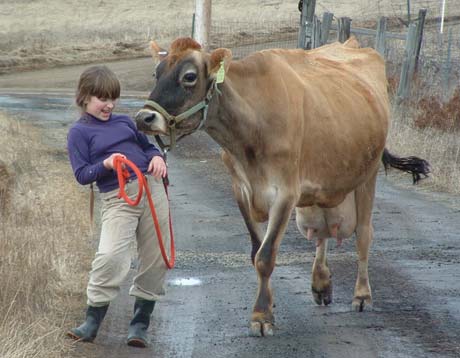







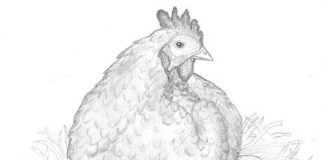







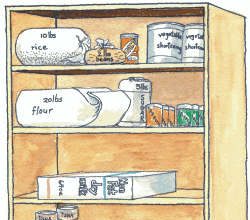
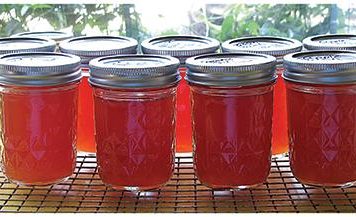

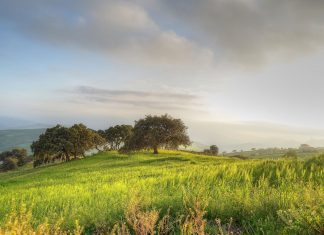
Thanks for mentioning how you should ensure that your cattle eat during the winter so that they can handle the lower temperatures. My wife and I recently inherited some cattle from my late uncle, and we would like to find some affordable food to give them this winter since we have over 10 cows. We’ll be sure to look for something that will suit our needs.
It was interesting when you said that cows are herd animals and thrive in a social setting. My sister is thinking about buying Black Angus cattle soon. I’ll make sure she plans on getting more than one to keep them socially satisfied!
Just bought my first cow. She will be my foundation start…as wish to breed this a “seed” stock. Murray Grey…beef…high marbling, tenderness..n’eonderful mild, gentle temperment..smaller in size, ndo exceptionally well on quality grass hay.Just love my “girl”…she is Silver in color, n her value so far should be that of Gold! Am new to the Cattle world..she is teaching me how n what is needed to keep her happy..since she has learned that I care, n respond to her “requests”…there is now, a real trust…very rewarding when she stops eating, n looks at me eye to eye with appreciation…have only had her one month…think I may rate at a B+…going for an A+! Can not explain how caring for her has been so joyful…n made my day with a feeling of accomplishment n doing something that makes me so very happy…Chris..Queenslund Murry Grey’s…now looking for land n new home for her, myself, n Hup Pup, our Pug team mate.Wishing ALL who may read this, the very bedt with their project!